Driving Oman
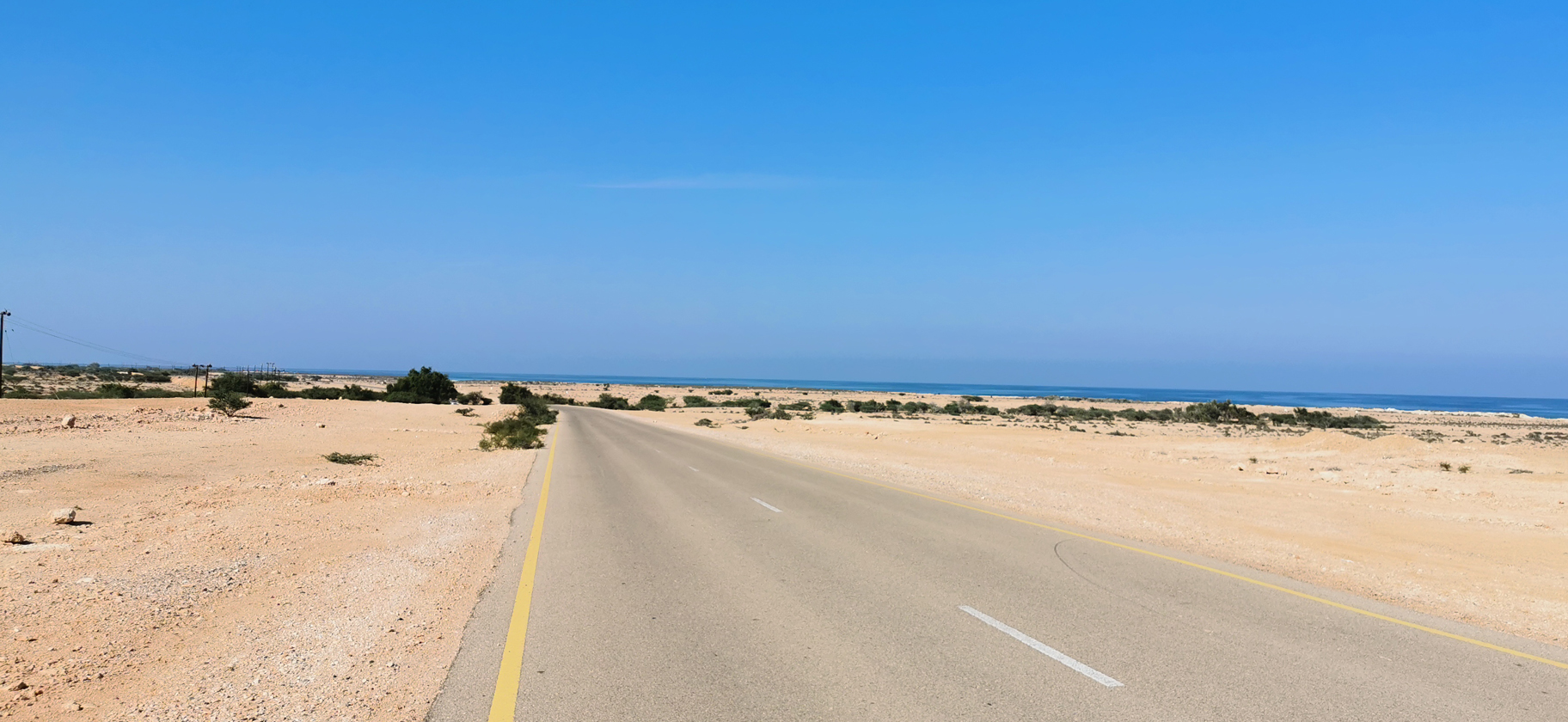
Highway 17 breaks off from Sultan Qaboos St, also known as highway 1 that runs the length of the city of Muscat from west to east, and heads due south into the desert and around jagged rolling piles of mountainous desert rubble. The highways are wide and there is little traffic outside of the city making any road journey in Oman quick and safe. There are speed cameras every couple of kilometres and the rental cars’ dashboard lights up if you stray over the posted speed limit. The 17 curves around the mountains and eventually leads to the seaside by the gulf of Oman with a highway that stretches from Dibab to Sur for some 70 kilometres with mountains on one side and the sea on the other. There are small dusty towns along the way and many people, locals and visitors, will set up small tents on deserted patches of sand by the sea. One of the popular spots along this road is Bimma Sinkhole. There is not much but a parking lot, some public toilets, and a mysterious hole in the ground with cool fresh water in the shade where visitors can take a dip and get out of the heat of the sun.
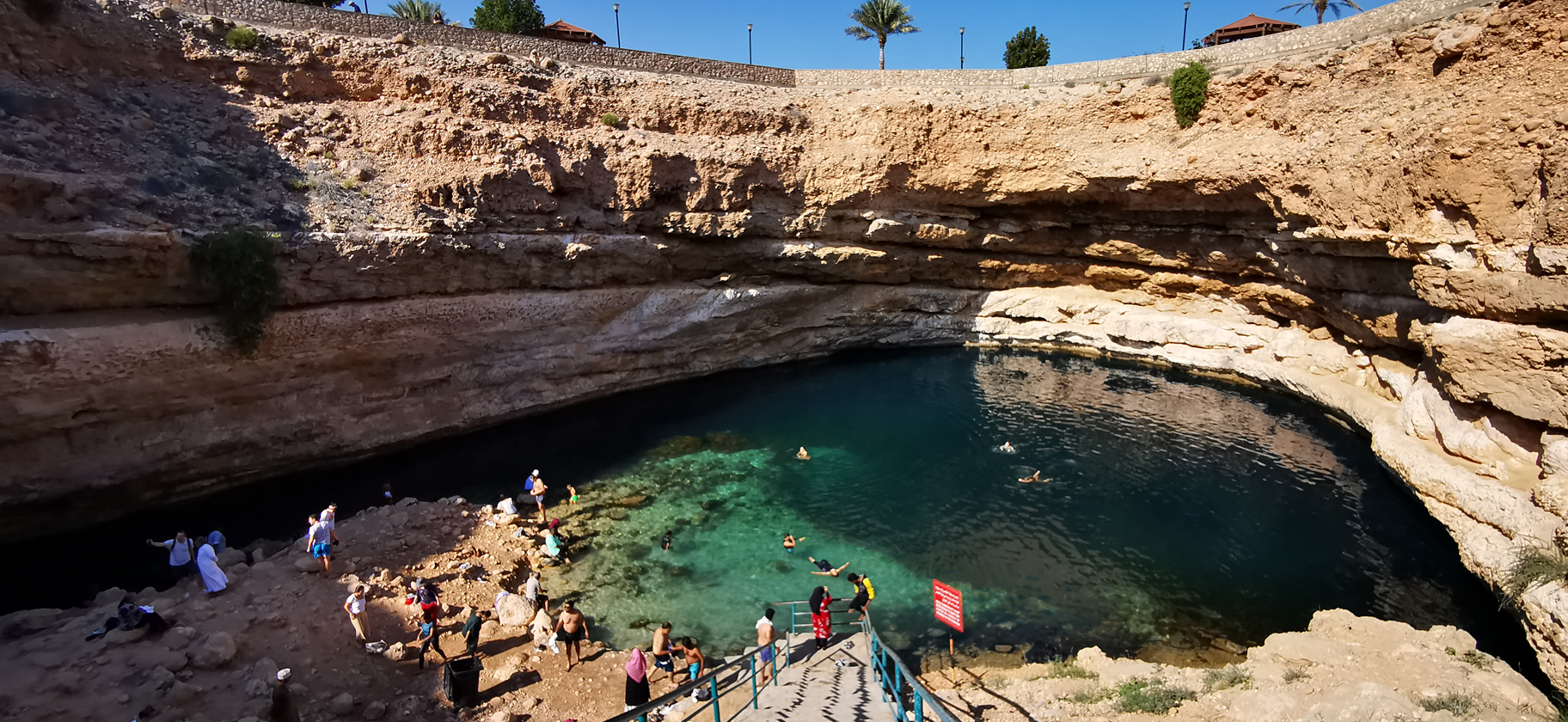
Jutting into the mountains on the west side of the highway are the wadis – seasonal rivers that have sliced their way through the rock and drain into the sea. Wadi Shab is just north of the town of Tiwi and visitors have to take a boat with a guaranteed return trip to the far side of the wadi where they can then hike, 4 kilometres round trip, through the cavernous cliff faces and along the river to a cave with a small waterfall at the far end. Grass grows tall at the bottom of the river and, aside from the tall palms that line the avenues of many towns, it is along these wadis where Oman’s predominantly desert climate decides to give way to lush greenery. In order to reach the cave at the far end of the wadi, there are portions of the hike where visitors are forced to swim. Most families and older folk forego the adventure choosing to drop their gear and swim at the first pool. The first pool is the end of the hike for everyone’s gear and the braver souls need to swim across a series of pools and hike over shallow stoney rivers to get to the cave at the far end. Rocks worn smooth by centuries of erosion hang over a deep pool of cool and crisp water. There is a rope hanging from one rock with an outcropping that people climb before jumping into the pool below. At the far end of the final pool, there is a fissure in the rock with just enough space to get one’s head through. With most of the body submerged in the water, and clinging tightly to the rock, intrepid swimmers wriggle their way through a narrow corridor less than a metre wide and maybe ten metres deep to the far end where inside the cave there is a small waterfall cascading into one final pool.
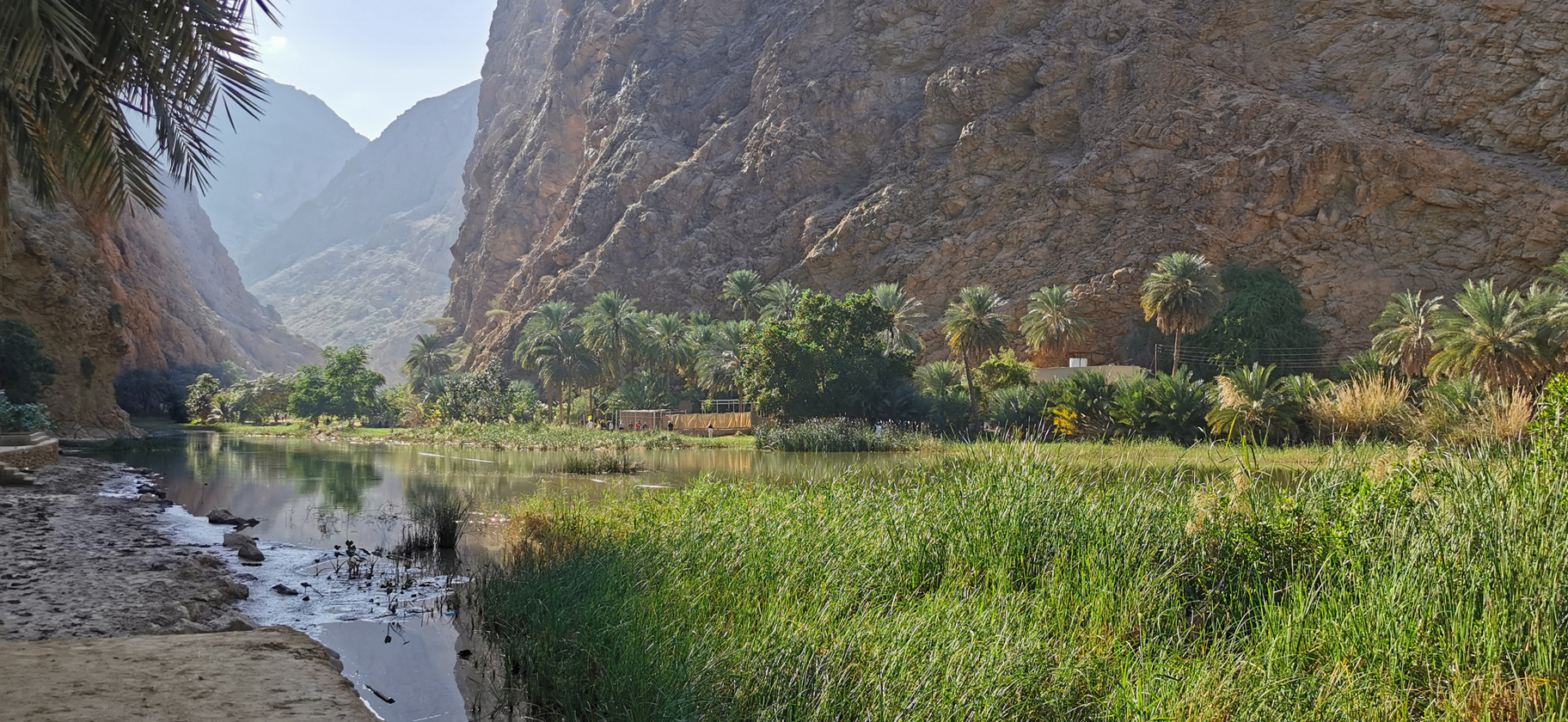
From the city of Sur in the east, Highway 17 ends and turns into Highway 23 which runs south toward Al Kamil Wal Wafi before making a ninety-degree right turn and heading toward the centre of the country. Most visitors will take this route in order to stop at one of the towns on the fringe of the sand sea of Wahiba. Bidiyah and Al-Wasil are the main stops here. They are small towns that service the desert camps that are nestled deep within a vast expanse of gentle undulating dunes. The sands are one of the main draws of Oman’s tourist industry where the actual experience falls well short of the fantasy, but witnessing a sunset over the desert is a once-in-a-lifetime experience that no one should pass up.
Highway 23 eventually links up with Highway 15 that runs all the way back north to the capital. But Highway 27 breaks off of the 23 and heads west toward Adam where the most adventurous of travellers can choose to take the seemingly endless Highway 31 that runs along the spine of the country all the way to Salalah in the south. Heading in the opposite direction, Highway 31 heads up to the town of Nizwa.
It is three lanes of open road travelling in either direction with little traffic and it was not uncommon to feel alone on the highway with no other cars in the distance or in the rearview. There are vast desert plains pockmarked with short shrubs and desert trees on either side of the highway with the odd settlement or the occasional camel visible in the distance. Occasionally you will whiz around a series of small hills and there is always a mountain visible somewhere off in the distance under the big sky and across the desert plain.
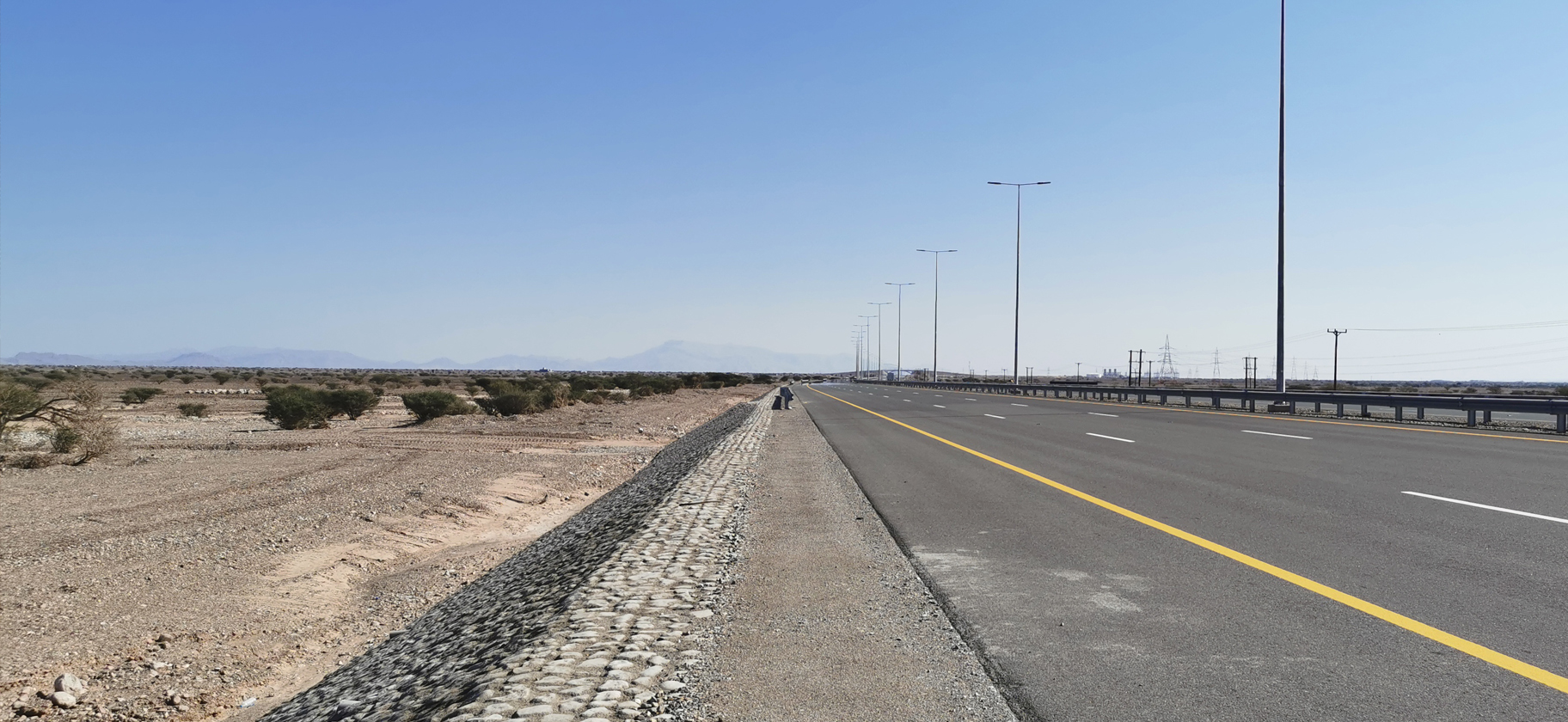
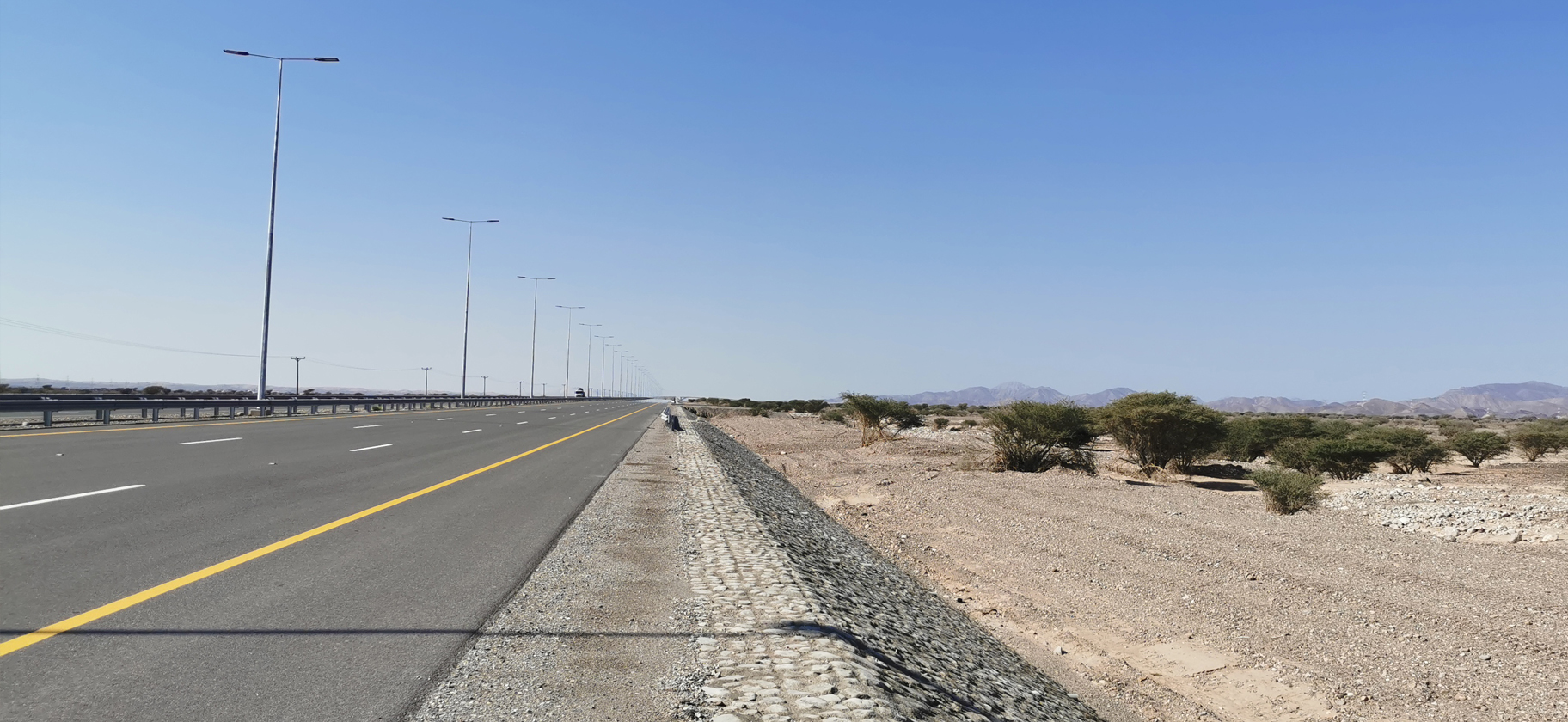
Nizwa Fort and the souq are the main draws for most visitors but it also serves as the crossroads for those travelling either to Diana’s point or to Jebel Shams. Like most towns in Oman and neighbourhoods in Muscat, everything is spread out wide and designed for automobiles and not for pedestrians. There are large air-conditioned malls with large parking lots that can provide you with everything you need, but there are few places outside of the souk to just amble and pass the time. Before visiting the souk in Nizwa, dried dates were the kind of item in specialty shops that I would just walk past. Brown and wrinkly, there is nothing appetizing about their appearance but, in the souk, I was introduced to a shop that specialized in dates and I learned that their flavour and texture are as nuanced as any wine-producing grape. Not only does each variety have its own subtle and unique flavour but certain varieties can also be infused with various spices like cinnamon, ginger, or anise.
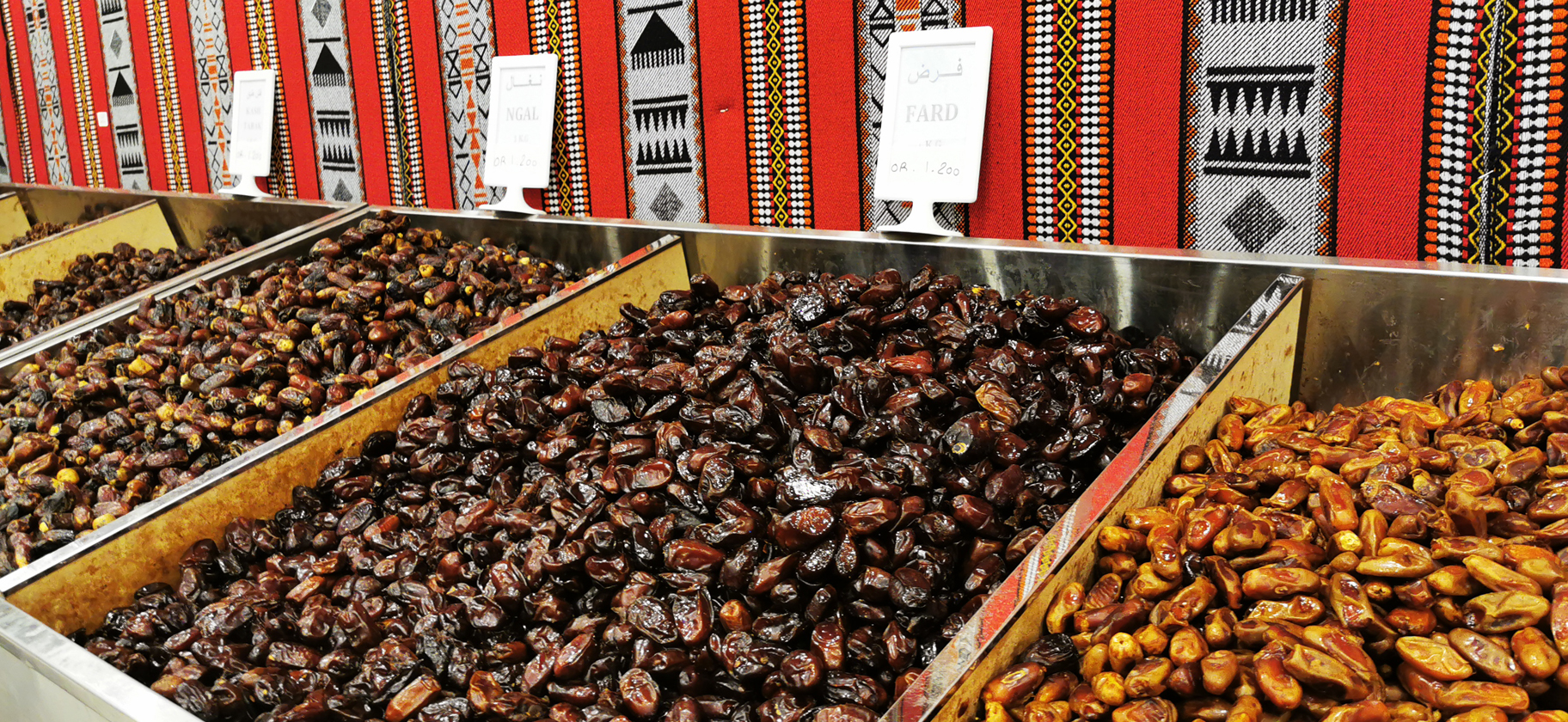
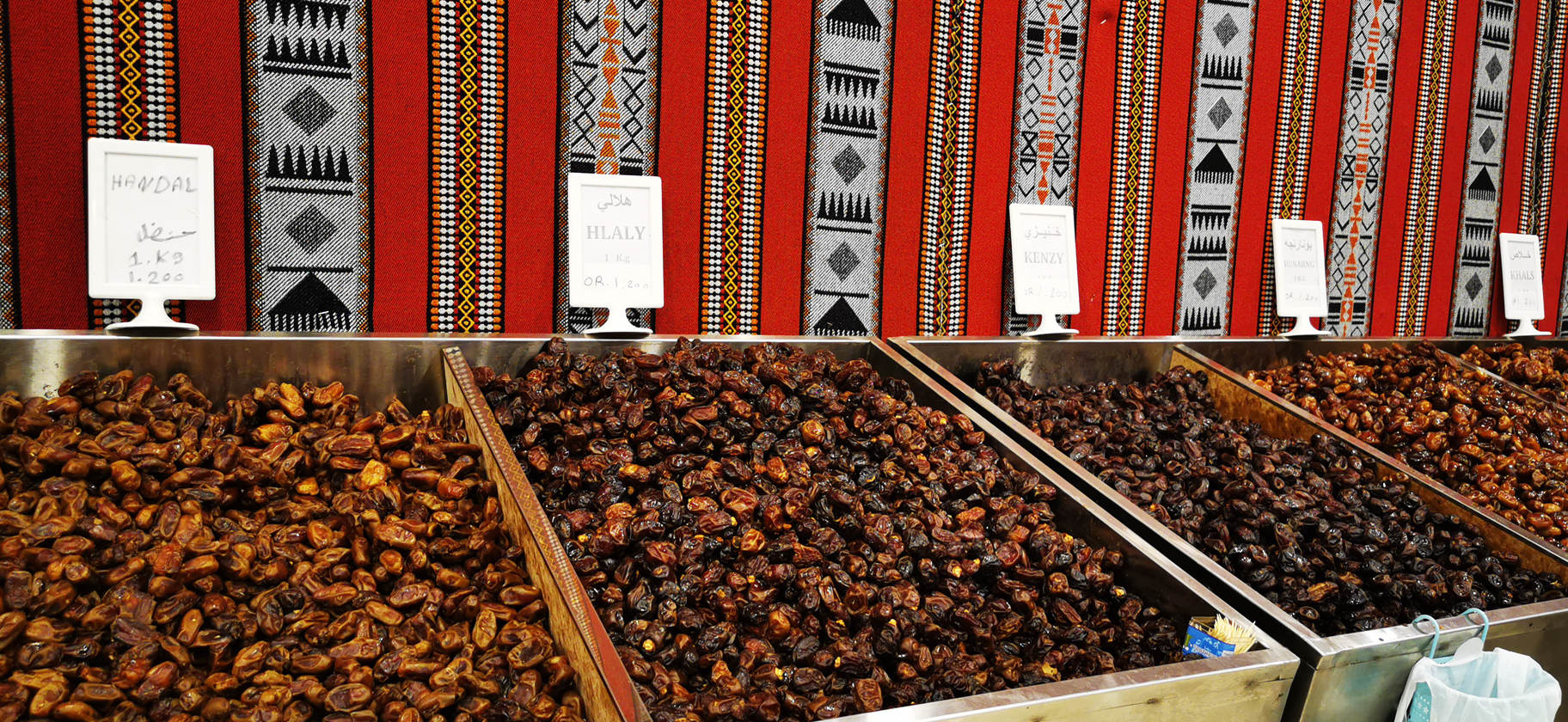
Nearby Bahla is similar to Nizwa with everything built just off the main road that runs through town. Though less well known than Nizwa, it has its own fort and is only 20 kilometres south of the town of Al-Hamra that sits at the foot of the Akhdar mountains. Al-Hamra is most well known for its old quarter whose old broken-down buildings were built in the Yemeni style. In an attempt to attract tourists, there is a museum here that recreates 18th-century Yemeni city life.
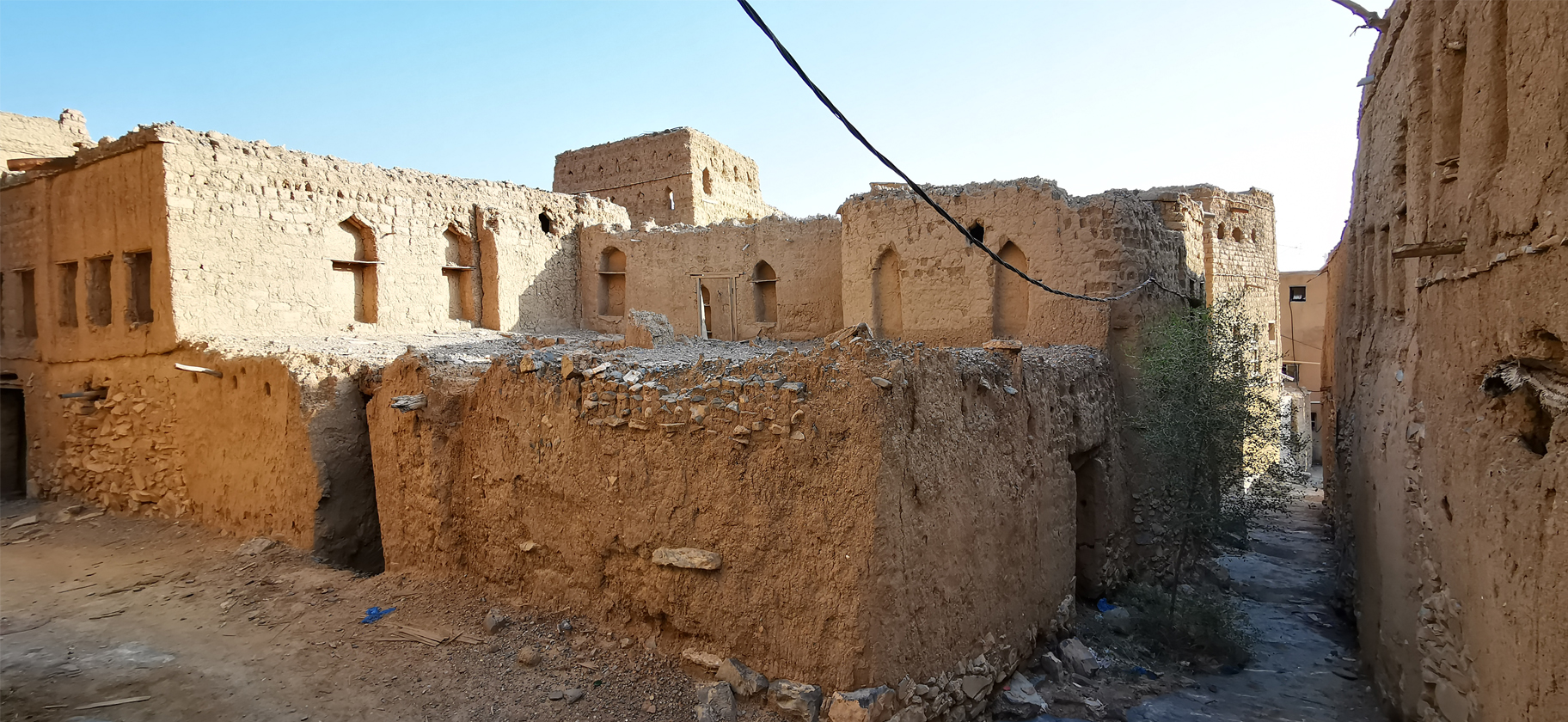
Heading up to Jebel Shams is a long series of switchbacks along a road that rises all the way into the clouds. At various pullouts along the route from Al-Hamra, spirited entrepreneurs will stop cars that are not four-by-fours and explain that the route to Jebel Shams is not paved and offer to do the drive in their own four-by-four for a fee. Though much of the road is not paved, nor is it well signposted and one can easily wander off the main road and end up at the army base at the peak as I did, it is not a road to be feared no matter what kind of car you happen to be driving. Along the main route to the top, there are a series of pullouts where visitors are treated to views of what is known as the Grand Canyon of the Middle East. Immense jagged peaks climb for a kilometre or more right up into the sky. They are sunburnt and grey and the top of the pass is devoid of all greenery. Birds circle and chase one another in the crevice below. The winds at the top are unpredictable and when a gust blows through you can feel your body instinctively lean toward the centre of the mountain. There is a fancy, high-priced, hotel at the top, but some visitors arriving by car will park just off the main road and set up their tent for what I can only imagine is a very uncomfortable night’s sleep.
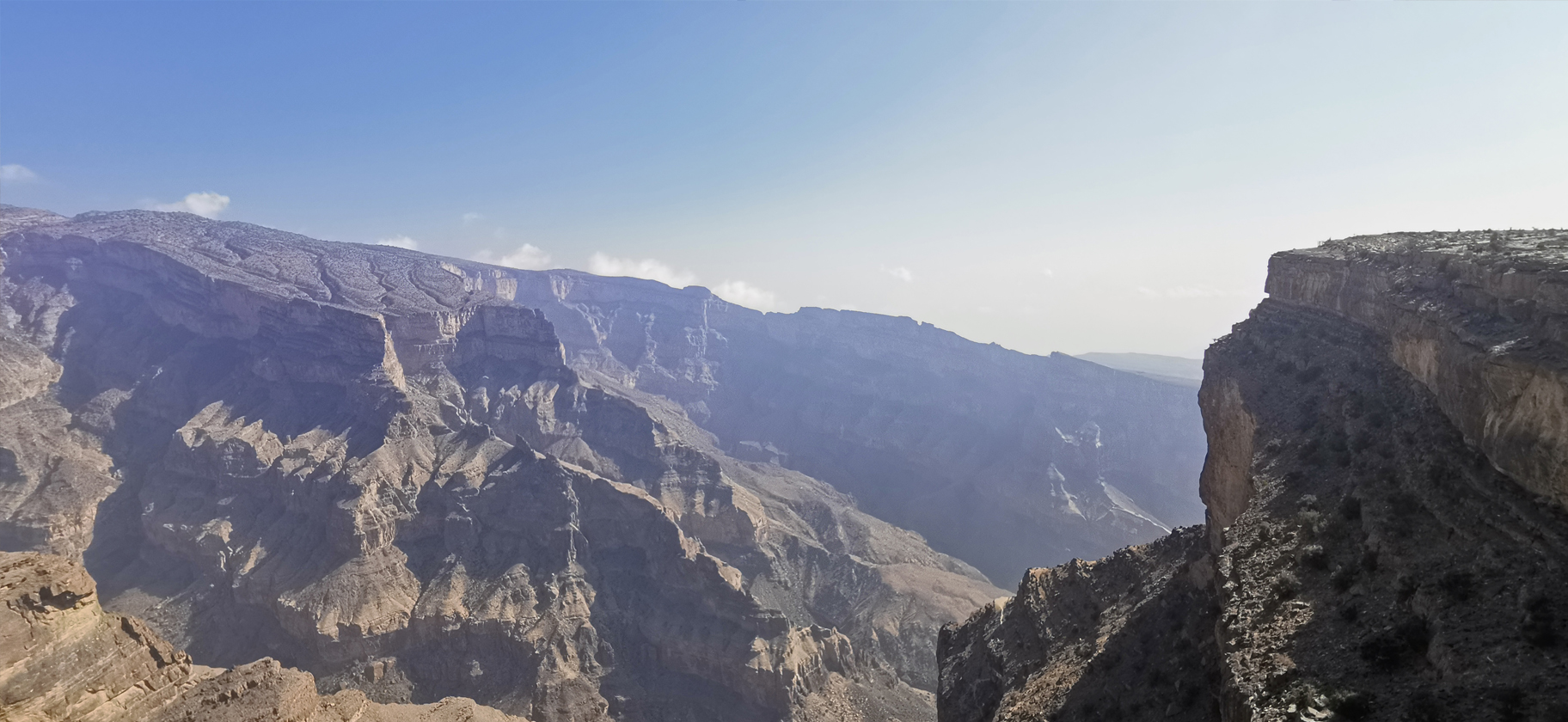
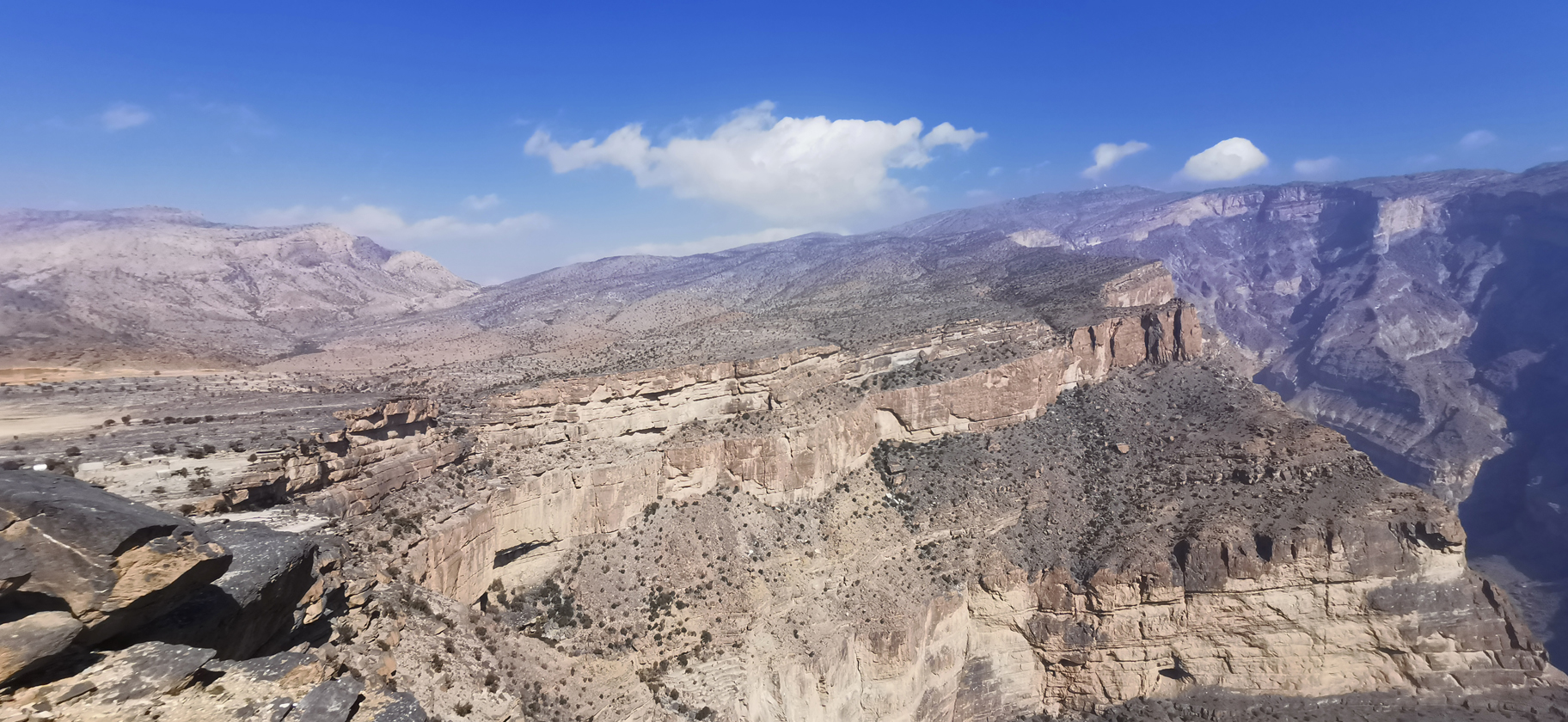
Morning on the fifth and final day of the very expensive rental brings sunshine and one last journey along Highway 15 and through the mountains to the north, past a few small towns, and all the way back to Muscat and the dealership in Ruwi. It is an easy ride in the sunshine with the radio blasting the sharp bowed strings and the thump and clatter of percussion from the Arabian peninsula’s current top 40. The car has collected a lot of dust along the way so I stop at a garage to have her washed before I drop it off. I step out into the heat of the day at the front steps of the office of the dealership and drop off the keys. They run a routine check and let me get away with the fact that I have gone over my 200km daily limit. Ten days allotted on my passport has passed by in a flash. There is never enough time to see it all and, in the case of Oman, not enough time to savour every moment, but rules are rules and it is time to move on.